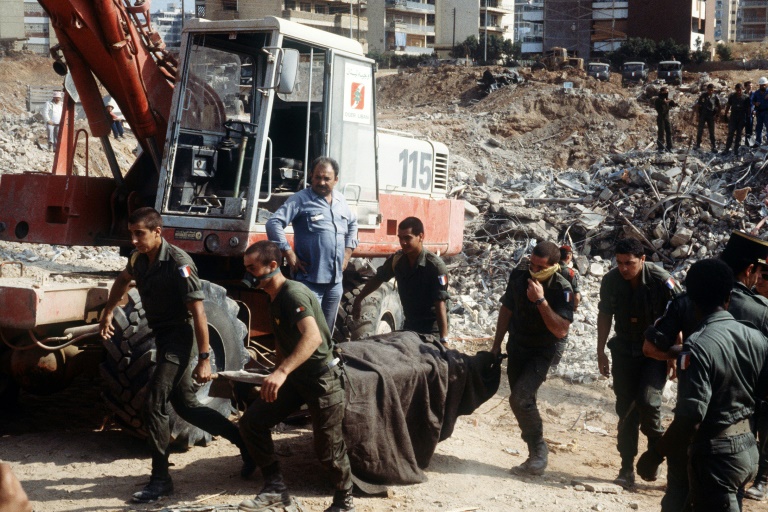Survivors of 1983 Beirut attack horrified by Mideast violence

The Drakkar hotel, housing French troops, was razed to the ground in the 1983 attack
Paris – On October 23, 1983, attacks on French and US military in Lebanon’s capital Beirut left hundreds dead — 40 years on, survivors are horrified at today’s upsurge in violence.
“What’s going on now in the Middle East just stirs up all those memories,” said Eric Mohamed, a former French soldier.
He was just 20 when the Drakkar, the hotel housing French troops, was razed to the ground. Fifty-eight died, and Mohamed was among 15 survivors.
Moments earlier, he and his colleagues had heard a massive explosion elsewhere in the city and gone to the balcony to look — it was an attack on a US base that killed 241.
“We barely had enough time to turn around and ‘boom’, it was our building that was blown up,” Mohamed recalled at a memorial ceremony in Paris on Monday.
In Beirut, the US and French ambassadors laid a wreath at the US embassy’s memorial for those who were killed.
“Today, we reject, and the Lebanese people reject, the threats of some to drag Lebanon into a new war,” US ambassador Dorothy Shea said in comments posted on the embassy’s website.
Israel is involved in a brutal conflict with Hamas in Gaza, and tension has been rising with Lebanon-based militant group Hezbollah.
Hamas militants stormed into Israel from the Gaza Strip on October 7, and killed at least 1,400 people, mostly civilians who were shot, mutilated or burnt to death on the first day of the raid, according to Israeli officials.
More than 5,000 Palestinians, mainly civilians, have been killed across the Gaza Strip in relentless Israeli bombardments in retaliation for the attacks by the Palestinian Islamist militant group, according to the latest toll from the Hamas health ministry in Gaza.
For many of the survivors of the 1983 attacks, the pain of four decades refuses to ease — intensified by outstanding questions over what happened that day.
– ‘Wound never healed’ –
The official explanation from both Paris and Washington was that Hezbollah, working to the orders of its paymasters in Iran, carried out the attacks using truck or car bombs.
Mohamed doesn’t buy it.
“From the fourth floor, I had a view of the entrance to the garage just a few metres away, and I can tell you that no car bombs entered the site,” he said.
He is not alone in doubting the official account.
Plenty of those involved with the official association for survivors and families of the Drakkar attack believe the building was mined by Syria’s secret service, which had occupied it shortly before the French.
And families continue to get new information, questioning why they have never received a full and clear account of the day’s events.
Annick Devaast, whose older brother Patrick was killed in the attack, said she had only just learnt that her brother had called for help for two hours before he died.
“The silence has lasted 40 years, it’s unacceptable,” she said at the ceremony in Paris.
Likewise Pierre-Yves Lepretre, whose brother Dominique also lost his life at the Drakkar, said he had never had an explanation.
“We received a coffin and that was it,” he said.
“We have a lot of questions and we’ve never had answers. The wound never healed.”
